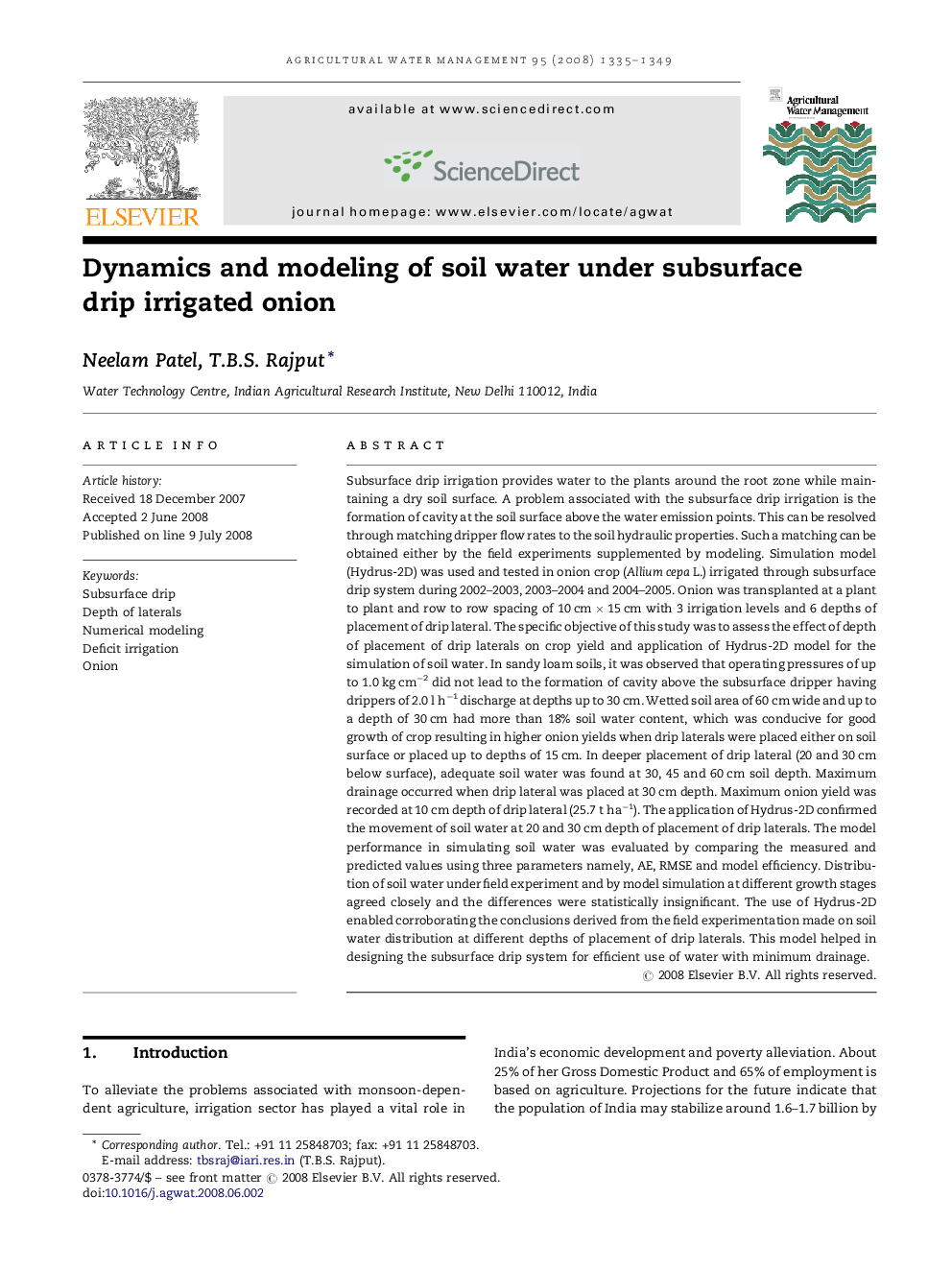| کد مقاله | کد نشریه | سال انتشار | مقاله انگلیسی | نسخه تمام متن |
|---|---|---|---|---|
| 4480069 | 1316472 | 2008 | 15 صفحه PDF | دانلود رایگان |

Subsurface drip irrigation provides water to the plants around the root zone while maintaining a dry soil surface. A problem associated with the subsurface drip irrigation is the formation of cavity at the soil surface above the water emission points. This can be resolved through matching dripper flow rates to the soil hydraulic properties. Such a matching can be obtained either by the field experiments supplemented by modeling. Simulation model (Hydrus-2D) was used and tested in onion crop (Allium cepa L.) irrigated through subsurface drip system during 2002–2003, 2003–2004 and 2004–2005. Onion was transplanted at a plant to plant and row to row spacing of 10 cm × 15 cm with 3 irrigation levels and 6 depths of placement of drip lateral. The specific objective of this study was to assess the effect of depth of placement of drip laterals on crop yield and application of Hydrus-2D model for the simulation of soil water. In sandy loam soils, it was observed that operating pressures of up to 1.0 kg cm−2 did not lead to the formation of cavity above the subsurface dripper having drippers of 2.0 l h−1 discharge at depths up to 30 cm. Wetted soil area of 60 cm wide and up to a depth of 30 cm had more than 18% soil water content, which was conducive for good growth of crop resulting in higher onion yields when drip laterals were placed either on soil surface or placed up to depths of 15 cm. In deeper placement of drip lateral (20 and 30 cm below surface), adequate soil water was found at 30, 45 and 60 cm soil depth. Maximum drainage occurred when drip lateral was placed at 30 cm depth. Maximum onion yield was recorded at 10 cm depth of drip lateral (25.7 t ha−1). The application of Hydrus-2D confirmed the movement of soil water at 20 and 30 cm depth of placement of drip laterals. The model performance in simulating soil water was evaluated by comparing the measured and predicted values using three parameters namely, AE, RMSE and model efficiency. Distribution of soil water under field experiment and by model simulation at different growth stages agreed closely and the differences were statistically insignificant. The use of Hydrus-2D enabled corroborating the conclusions derived from the field experimentation made on soil water distribution at different depths of placement of drip laterals. This model helped in designing the subsurface drip system for efficient use of water with minimum drainage.
Journal: Agricultural Water Management - Volume 95, Issue 12, December 2008, Pages 1335–1349